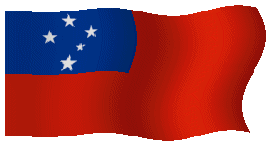|
Michael A. Stecker
mastecker@gmail.com
Home
Slide Show (PDF)
Slide Show (ProShow)
People Index APP
Astroimage
Index
Photo Album
(Photobucket) Links
digiphoto photomas
Places Index
Antarctica
Asia
Astronomical Sites
Australia
Egypt Europe
Polynesia
New Zealand
North America
Scenic
Treasures
Independent State of
Samoa
(formerly Western Samoa on my
1986 trip)
.

.
Samoa
Documentary
https://www.youtube.com/watch?v=yCpUhY-eH4U&t=2877s
.
other South Pacific islands
American
Samoa Tahiti
You Tube
"Tahiti" slide
show at:
https://www.youtube.com/watch?v=YJElQobrNqs
Tahiti .mp4 slide show:
Tahiti
http://mstecker.com/video/TahitiMP4-fromYT.mp4
Slide Shows
(These are Windows Executable .exe files requiring
the MS Windows operating system to run.
Will not run with Apple/Mac operating system)
Tahiti, Samoa and
American Samoa
(..ss/Polynesia-exec.exe)
Tahiti, Samoa and
American Samoa
(..ss/Polynesia1-exec.exe)
|
|
Geography
Samoa, formerly Western
Samoa (when I visited it in 1986), is a Polynesian South Pacific 10 island
group about 2,300 miles southwest of Hawaii. The islands are volcanic in
origin with the highest point on Savai’i at 6097 feet. Its two main
islands are Upolu and Savai'i . The largest and highest (6097 feet) of
these is Savai'i, which covers 622 sq miles of tropical verdant terrain.
The second largest is Upolu, 8 miles southwest across the Apolima Strait.
Upolu Island is the home of Samoa’s capital – Apia. The island I
visited was Upolu, home of Robert
Luis Stevenson, Falefa Falls and Aggie Grey’s Hotel.
History
Polynesians (possibly from Tonga) first settled in the Samoan islands
about 1000 B.C. Dutch and
French traders first explored the region in the
18th century. In an 1899 treaty the sphere of influence
was
divided between the USA over American Samoa and Germany over Western
Samoa. In 1914
New Zealand seized Western Samoa from Germany and in 1946
it became a United Nations Trust Territory
administered by New Zealand. A resistance movement known as the Mau helped
to steer Western Samoa toward independence and it became a self governing
constitutional monarchy on
January 1, 1962. In 1997 Western Samoa’s
official name was changed to Samoa.
Links:
http://en.wikipedia.org/wiki/Samoa
http://www.lonelyplanet.com/letters/pac/wsa_pc.htm
http://www.samoa.co.uk/samoa.html
http://www.greatestcities.com/Oceania/Samoa/Apia_town_state_capital.html
|